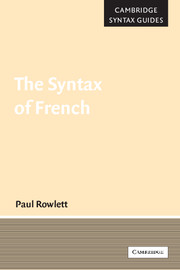The Syntax of Hungarian
Clearly written and comprehensive in scope, this is an essential guide to syntax in the Hungarian language. It describes the key grammatical features of the language, focusing on the phenomena that have proved to be theoretically the most relevant and have attracted the most attention. The analysis of Hungarian in the generative framework since the late Seventies has helped to bring phenomena which are non-overt in the English language into the focus of syntactic research. As Kiss shows, its results have been built into the hypotheses that make up universal grammar. The textbook explores issues at the centre of theoretical debates including the syntax and semantics of focus, the analysis of quantifier scope, and negative concord. This useful guide will be welcomed by students and researchers working on syntax and those interested in Finno-Ugric languages.
- A comprehensive study of syntax in the Hungarian language
- Describes the key grammatical features of the language
- Explores issues at the centre of theoretical debates
Reviews & endorsements
"Readers will definitely benefit from the author's extensive analysis of Hungarian syntax, supplied with ample illustration, a profound insight into preceding and contemporary research in various theoretical frameworks, and an extensive reference list, the traits of an excellent composition well deserving to be featured in he prestigious Cambridge Syntax Guides series." IJGLSA
"Readers will definitely benefit from the author's extensive analysis of Hungarian syntax, supplied with ample illustration, a profound insight into preceding and contemporary research in various theoretical frameworks, and an extensive reference list, the traits of an excellent composition well deserving to be featured in the prestigious 6Icambridge Syntax Guides^r series." IJGLSA
Product details
July 2002Paperback
9780521669399
292 pages
229 × 152 × 17 mm
0.43kg
Available
Table of Contents
- 1. Introduction
- 2. The topic-predicate articulation of the sentence
- 3. The minimal predicate
- 4. Focusing
- 5. Quantification
- 6. Negation
- 7. The noun phrases
- 8. The postpositional phrase
- 9. Non-finite and semi-finite verb phrases
- 10. The subordinate clause.





